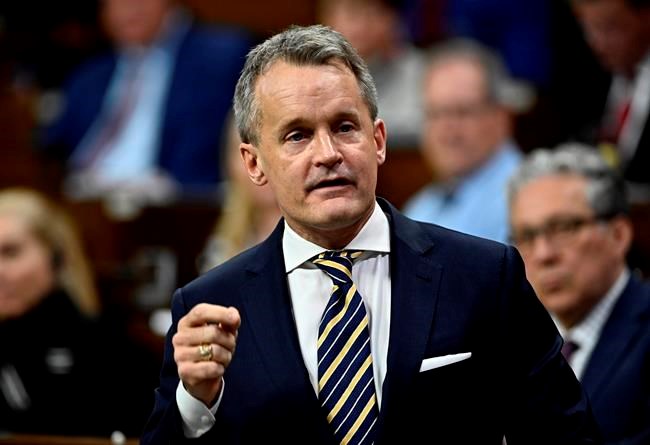Ottawa launched a new pay transparency website Friday to better illustrate how women, visible minorities, people with disabilities and Indigenous Peoples are represented and paid at federally regulated private sector employers.
The new site, called Equi'Vision, provides a visualization that allows users to compare data on workforce representation rates and pay gaps experienced by all four groups.
The data can be searched based on employers, sectors or locations.
Labour Minister Seamus O'Regan billed the new tool as a way to shine a light on where gaps in employment can be reduced and representation improved.
The site "empowers employees to be able to look at companies and say, 'How are they doing with equity? Is this a place I want to work?'" O'Regan said.
The data comes from figures submitted by federally regulated private sector employers with 100 or more employees as part of their annual reporting under the Employment Equity Act.
Individual employee information, including data related to individual salaries, is not included.
In the banking sector, the tool shows that Indigenous Peoples comprise just 1.5 per cent of employees while representing 4 per cent of the population in Canada — the lowest across sectors included in the data sets.
For TD Bank, that number drops to 1.1 per cent; 1.3 per cent for RBC; 1.4 per cent for BMO and 1.5 per cent for the Bank of Canada.
CIBC has the highest Indigenous representation among the major banks in Canada, sitting at 3.1 per cent.
While the sector's overall representation of Indigenous Peoples is meagre, the data also points to education gaps.
The Canadian Bankers Association said the industry supports increasing representation and closing wage gaps for under-represented groups.
"Banks are also dedicated to partnering with government, post-secondary institutions, and other stakeholders to help support, grow and cultivate the specialized skills and talent among under-represented groups," the association said in a statement.
"This will help strengthen the pool of talent entering Canada's labour market and helping to address the systemic issues that contribute to inequity in Canadian society."
Assembly of First Nations national chief Cindy Woodhouse Nepinak acknowledged those education gaps in a recent interview with The Canadian Press.
She pointed to post-secondary education funding for First Nations students that is sunsetting in March and could leave nearly 8,000 young people in universities, colleges and trade schools in limbo.
"We need to find some new agreement to make sure that it's reinstated — lets triple it or quadruple it to make sure our young people have an opportunity."
O'Regan similarly acknowledged gaps in education, but said his government has made "great headway" in the past eight years on their reconciliation agenda.
"But we have a long way to go. And I look forward to the day we're going to see a number of those gaps closed."
This report by The Canadian Press was first published Feb. 2, 2024.
Alessia Passafiume, The Canadian Press




